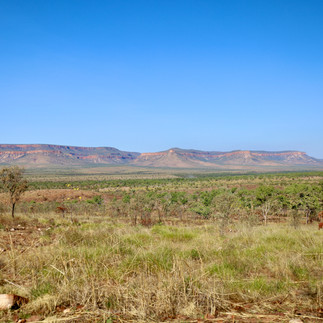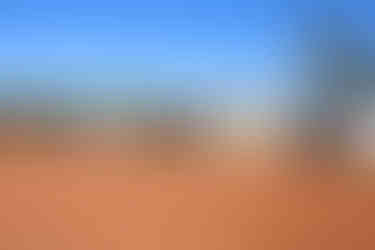Surviving the Remote Wilderness of Kalumburu: My Journey to the Top of WA
- Woolgoolgaoffroad
- Jan 17, 2024
- 5 min read
Updated: Jan 29, 2024
I was on the Mitchell plateau at the top of WA fishing for Barra when it sunk just how isolated and remote I was. My camp was up past the stunning Mitchell Falls at Walsh Point where it I had seen no one for a few days after leaving the tourist spots behind.

Being mid-July, Mitchell Falls was extremely busy at the campsites, on the trail to the falls and in the sky with choppers buzzing around ferrying tourists to and back from the falls. I decided to head further north and onto the very quiet Surveyors Pool and eventually up to Walsh Point where I was told the track down was pretty ordinary.
Arriving at Surveyor’s Pool carpark, I saw I was the only one here and the added bonus, was no noisy choppers in the sky. With a 30-minute walk up the pool and falls, I was blown away by the gorgeous Kimberly scenery and it was just hard to imagine this placed in full flood.

Laying in the cool water at the top of the falls for an hour, I heard the chatter of some visitors so I thought it would be a good time to leave.

The road further up to Walsh Point was definitely rough, but not as severe as I was told back at Drysdale River Station. Before dropping down to the lower parts of Walsh’s, several lookouts gave the most breathtaking views across into the Admiralty Gulf waters.

Dropping down the last section into Walsh’s I saw I was the only camper around so it was straight to the premium area with stunning water views surrounded by old Boab trees.
Now apart from getting to this remote and isolated part of WA, I planned to hunt down a few Barra and to enjoy the serenity after the visitor chaos back at Mitchell Falls for a few days. The sunsets were some of the best I have ever seen in WA with beautiful Boab trees as a backdrop, crocs and sharks cruised past camp at high tide, and yep - I caught several Barra up to 700mm long. Enough fish for a week.

LEAVING WALSH POINT
With a few fish and plenty of memories under my belt after a week at Walsh Point, It was time to leave and head back out and further north to Kalumburu. It is 100km back to the Gibb - Kalumburu Road turnoff and another 110 km up to the top of Kalumburu.

Previously I’ve seen a few shows where trucks tackle this road north and have all sorts of trouble where the road looks more like a track with plenty of water crossings, over ranges and across a variety of different terrain. With this in mind, I swung a left-back at the main intersection and headed towards Kalumburu.

I wasn’t disappointed with what the drive showed me with the water crossings, bird-filled billabongs, amazing views at the top of several ranges and the diverse range of wildlife along the way. Of course, this is still Croc country so there was no way I would stop for a cool dip.
KALUMBURU
Arriving at Kalumburu my first stop was at the local fuel stop, but being short on volunteers there was no fuel for sale on the day I was there. There’s a local shop with a good supply of supermarket items and that is where you need to get a permit to travel through town and onto the two camping areas further north. Keep in mind that Kalumburu is a dry town and no alcohol is available or can be drunk in town. The locals are more than welcoming to say hi and help in any way.

Kalumburu is the most northern settlement in WA and was home to several aboriginal groups for thousands of years but in recent years other groups have moved in. This corner of Australia was one of the main points of entry for our first inhabitants and evidence of this along with trading with Europeans is highlighted in the rock art scattered throughout the north Kimberly, especially the Bradshaw paintings.

In 1905 a Catholic mission was set up at Pago, north at Mission Bay, but was relocated to where Kalumburu is today in 1932 as there was a more reliable water source. Today at Pago you can still visit the crumbling ruins but need permission from in town to go on country. You can wander around the new stone mission and beautiful grounds today, and if you are lucky the museum may be open that has an array of artefacts from days gone by.

Originally Kalumburu was called the Drysdale River Mission and it played a strategic role in WW11 activities, with an army base and radar station the RAAF sought out the Japanese from here. Unfortunately in 1943 the Japanese found this location and bombed the airfield and mission killing 6 people, later on, the airstrip was moved further NW to the Anjo peninsular. Remnants of the bombed aircraft can still be found today north of the town where planes are broken in half and gear is scattered through the bush.
Finally, in 1954 a road path was surveyed and cut in to allow access to the town in the dry season.

McGOWANS BEACH
After getting a permit and a few groceries I headed further north to Mcgowans Beach camping area, the other camp spot called Honeymoon Bay is another top spot but gets booked out pretty fast.

McGowans is tucked down on the coastline looking due west and guaranteed every day there’s a stunning sunset and being croc country this isn’t the place to swim and frolic in the ocean.

The camp hosts have rules for discarding fish frames either several miles out to sea or an old quarry a mile away from campers, just a precaution to keep the crocs away. Fishing up here in the top end is regarded as some of the best Australia has to offer and most days there’s never a shortage of free fish to be handed around camp.

Mcgowans also have basic laundry facilities, they run Starlink for campers, there’s fresh water and every site has stunning ocean views.

After a week of kicking back in the area, it was time to head out and towards civilisation to Wyndham about 600km away. Syncing in with Kalumburu’s fuel bowser open times and getting just enough diesel to get back out, I headed away from the top end of WA over the wild and magnificent landscape the area has to offer.

The drive out was just as impressive across flat top hills that were once joint to the Mitchell Plateau and where Bauxite can be found. The landscape has been broken down over millions and millions of years leaving amazing rock formations, carving ancient riverbeds and gorges at one of the most isolated places in WA. This is one place that needs to be experienced at least once in your lifetime.
WHERE
Kalumburu is at the very top of WA, the most northern town in the NE of the Kimberly region. Once called the Drysdale River Mission, it's an extremely remote and isolated town on the King Edward River and more often than not, is isolated during the wet season. It's about 200km north of Drysdale River station, which can take a good 4 hours to drive due to the road condition.
LOCAL HOT SPOTS
Being part of the amazing Kimberly region the natural beauty will have you spellbound. From stunning waterholes through to amazing rock art, and desolated beaches with gorgeous sunsets this area is a naturalist’s dream. There’s history around town with WW11 plane wrecks, walks to local rock art, the mission’s museum plus some of the best fishing that our country has to offer.

OTHER GREAT INFO
The best time to head up there is during the winter months when tourists and keen fishermen spend weeks at a time in the area. Kalumburu has a small caravan park behind the Mission in town, and there are two other camping areas north, namely Mcgowans Beach camping and Honeymoon Bay. The local shop has a great range of supermarket items plus it's where you can get your permit to pass through town. Fuel is available on Wednesdays and Saturdays between the hours of 8 am - 10 am.
































Comments